Scientific name Xestia Higher classification Noctuinae Order Butterflies and moths | Tribe Xestiini (disputed) Rank Genus | |
 | ||
Lower classifications Setaceous Hebrew character, Square‑spot rustic, Double square‑spot, Xestia dolosa, Xestia sincera | ||
Smith s dart moth noctuidae xestia smithii warming up
Xestia is a genus of noctuid moths (family Noctuidae). They are the type genus of the tribe Xestiini in subfamily Noctuinae, though some authors merge this tribe with the Noctuini. Species in this genus are commonly known as "clay", "dart" or "rustic", but such names are commonplace among Noctuidae. Xestia moths have a wide distribution, though they most prominently occur in the Holarctic.
Contents
- Smith s dart moth noctuidae xestia smithii warming up
- Hungry moth caterpillar noctuidae xestia munches basswood leaf
- Ecology
- Systematics and taxonomy
- Synonyms
- Species
- Incertae sedis
- References
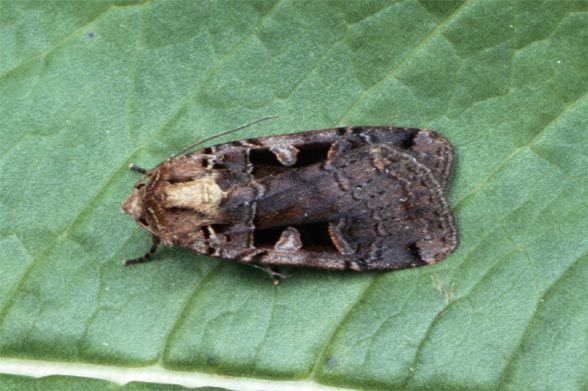
With almost 200 species included at one time, Xestia was something of a "wastebin genus". But almost half of the traditional species are nowadays placed elsewhere (see below), and some of the remaining ones are liable to be assigned to another genus also. On the other hand, new moths that probably in fact belong into this genus are still being discovered regularly or so (e.g. X. hypographa, which led to the 2002 transfer of X. ornata from Eugraphe to here). Thus, unless there are drastic taxonomic changes in the future, Xestia is likely to remain one of the larger noctuine genera.
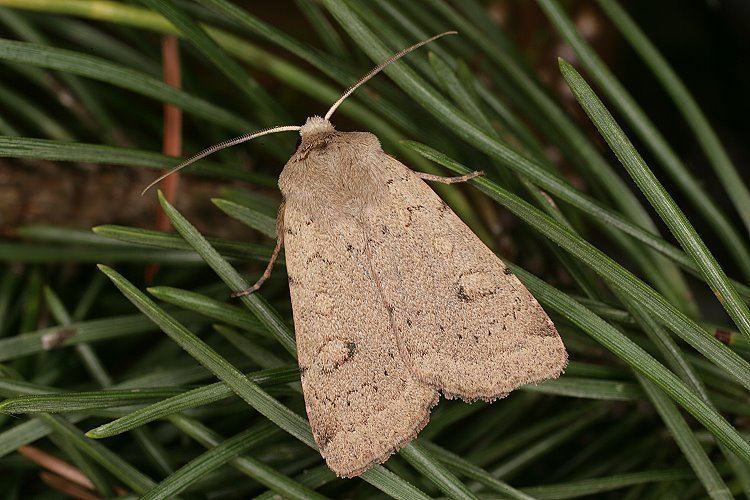
Hungry moth caterpillar noctuidae xestia munches basswood leaf
Ecology
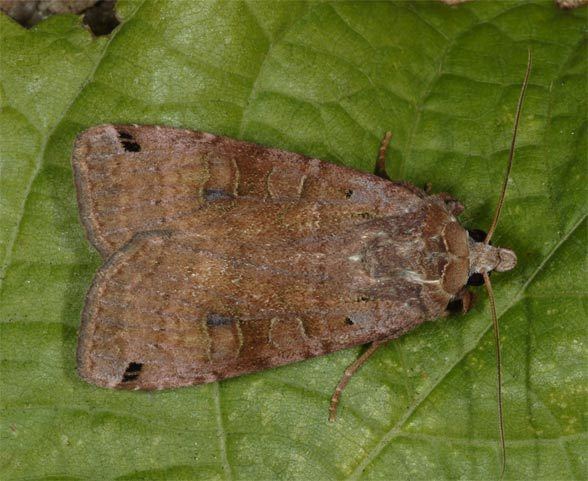
Xestia adults are usually of medium size and robust build, with stout hairy bodies and strong wings. Some are quite colorful moths, with bold lighter markings and hindwings in delicate yellowish, reddish or bluish hues. Generally, they are cryptic while at rest however, with unmarked pale or dull brownish hindwings; they do not have metallic hues and few species possess obvious eyespots.
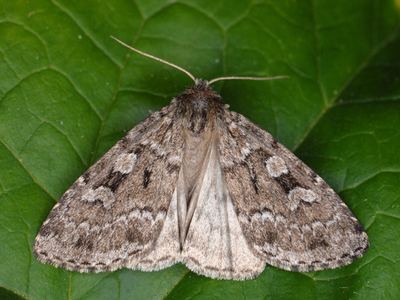
This genus includes many species living at high latitudes and altitudes, in tundra and taiga ecosystems. Some have two-year (semivoltine) life-cycles and only occur as adults every other year; typically the caterpillar larva overwinters to pupate in spring, with the moths flying around midsummer, but some species eclose later, their moths flying from late summer into autumn. Xestia caterpillars are generally stout and cryptically colored; in some species they have quite prominent dark lengthwise spots, but may e.g. be entirely green or whatever else gives best camouflage.
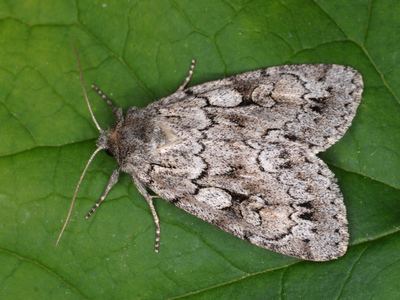
Some species' larvae are notoriously polyphagous, e.g. those the Setaceous Hebrew Character (X. c-nigrum) whose food includes all sorts of core eudicots – including Solanaceae and others which are poisonous to many herbivores – as well as some monocots. The latter are mainly Poaceae however, and few other monocots are utilized by Xestia larvae in general. Ericaceae, as well as Betulaceae and Poaceae, are key foodplants for many of the high-latitude species. Gymnosperms are foodplants of secondary importance in this genus, but Pinaceae form the mainstay or exclusive food of some species which occasionally become more than nuisance pests. Altogether, Xestia moths are only known as major pests within limited areas or in regard to specific plants, in which cases damage can be economically significant though.

Even though the larval foodplants of many Xestia species are not or insufficiently known, those on record are from all major lineages of core eudicots. Among the basal core eudicots, Caryophyllales (especially Polygonaceae) are particularly significant, of the asterids the Asterales (especially Asteraceae), Ericales (especially Ericaceae) and Lamiales (especially Plantaginaceae), and of the rosids the Malpighiales (numerous families) and Rosales (especially Rosaceae). Less important asterid orders among Xestia foodplants are for example Dipsacales, Gentianales and Solanales, of the rosids e.g. Fabales, Fagales, Malvales, Myrtales and Sapindales. More basal (mes)angiosperms do not seem to be significant as Xestia foodplants, at least not in temperate and cooler regions.
As far as is known, Xestia adults are nocturnal or crepuscular (except of course the high-latitude species), but often attracted to lights at night. They general feed on flowers with relatively short or no corolla, and will also drink other sugary liquids.
Systematics and taxonomy
Several species formerly placed here are now in Agnorisma and Pseudohermonassa; whether other genera are accepted varies among authors; Estimata, Hemigraphiphora and Perinaenia are provisionally considered distinct here. "Xestia" versuta does not seem to belong in the present genus; it may be an aberrant member of Goniographa, but until this is resolved it is here treated under its original name Eugraphe versuta.
Furthermore, a case for separation has in particular been made for Amathes (possibly including Agrotiphila), Lytaea, Megasema (possibly including Megarhomba), Segetia and Schoyenia (with Archanarta occasionally also separate), but these are here included in Xestia. Some of them are, however, recognized as subgenera, and if the genus is split further would be first to become elevated in rank again. There is no real good justification for either treatment, except that the lengthy process of a thorough revision of noctuine systematics and taxonomy has only progressed so far. H. Beck in 1996 published a comprehensive taxonomic catalogue, introducing generic names for most European groups of (presumably) related species. While few of these seem to stand any chance ever to be widely recognized as distinct genera, this step is likely to have made available a generic name for any taxa that are eventually split from Xestia sensu stricto.
Synonyms
Junior synonyms and other obsolete generic names for Xestia moths are:
Species
The 110 or so species here placed in Xestia are divided among 5 subgenera. Two of these are further divided into groups, which are based on phenetic similarity however and may or may not form clades and/or species complexes. Some of these would presumably warrant recognition as subgenera if the present-day subgenera are split off; the subgeneric names that would apply are given (if known) in the addition to the species-group names.
About one-third of the species here included in Xestia are incertae sedis (of unclear assignment). Among this group are a few species which are extremely little-known, having been described long ago but studied only once or twice since then.
Incertae sedis
If the affiliations of the subgenera are not very much mistaken, most remaining cases of erroneous assignment to Xestia are to be found among the species of uncertain group affiliation here; for the recently described X. kecskerago for example it was explicitly stated that placement in the present genus is tentative. Other species of unclear affiliation are so little-known that even their validity remains questionable, though this group equally well seems to contain quite distinct lineages of true Xestia. Also, there are some obvious species groups which do not easily fit into the subgeneric scheme above.
